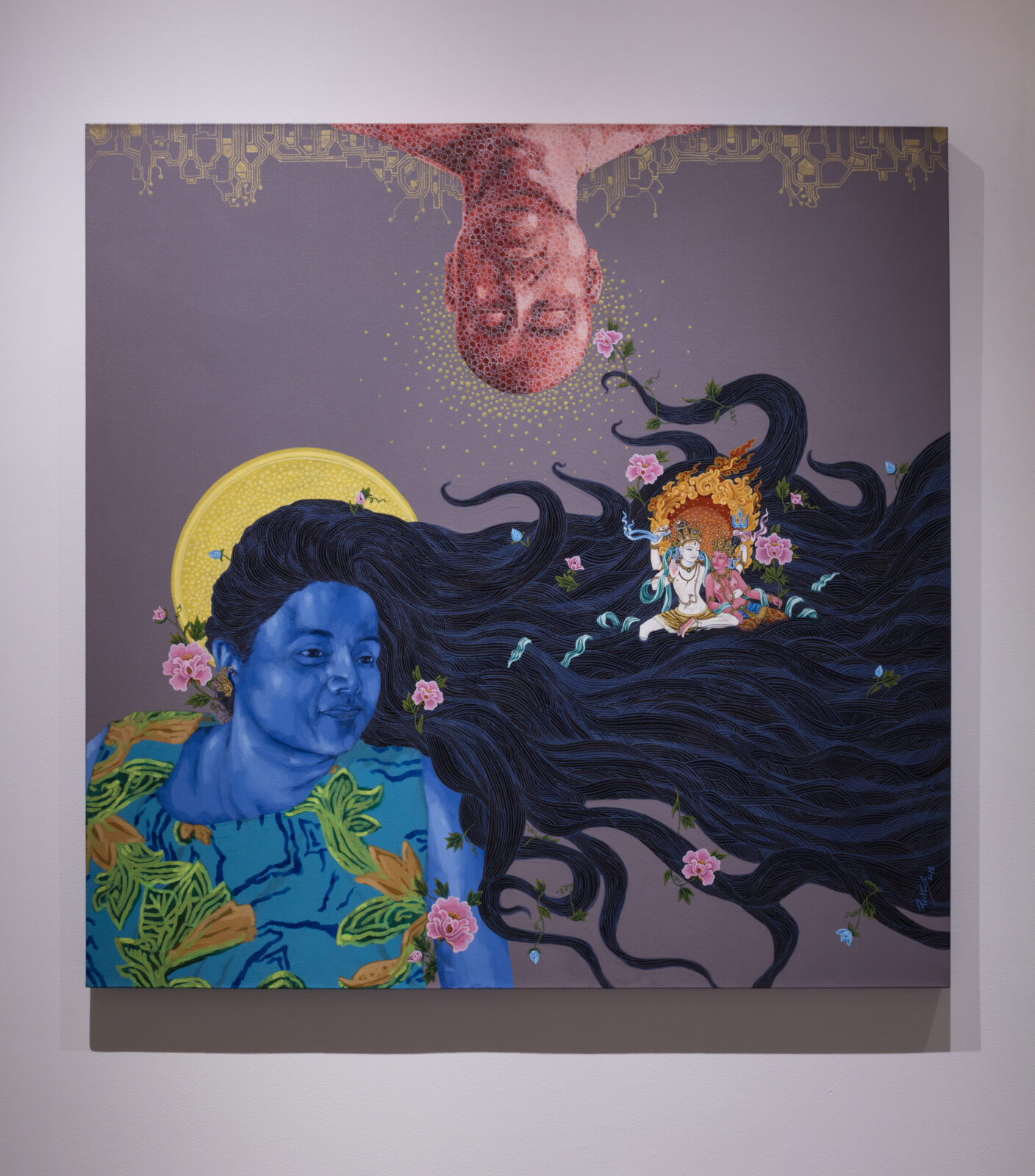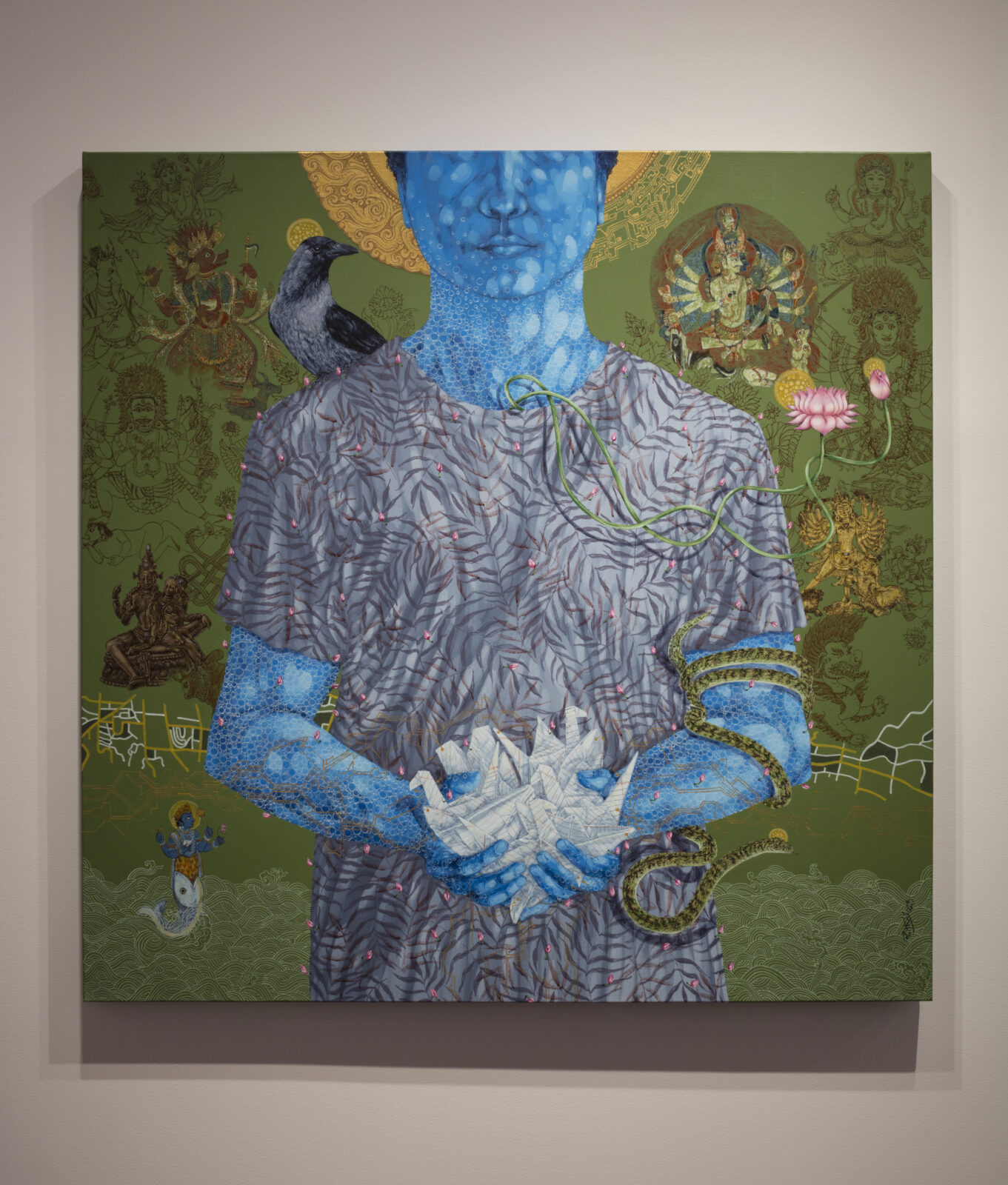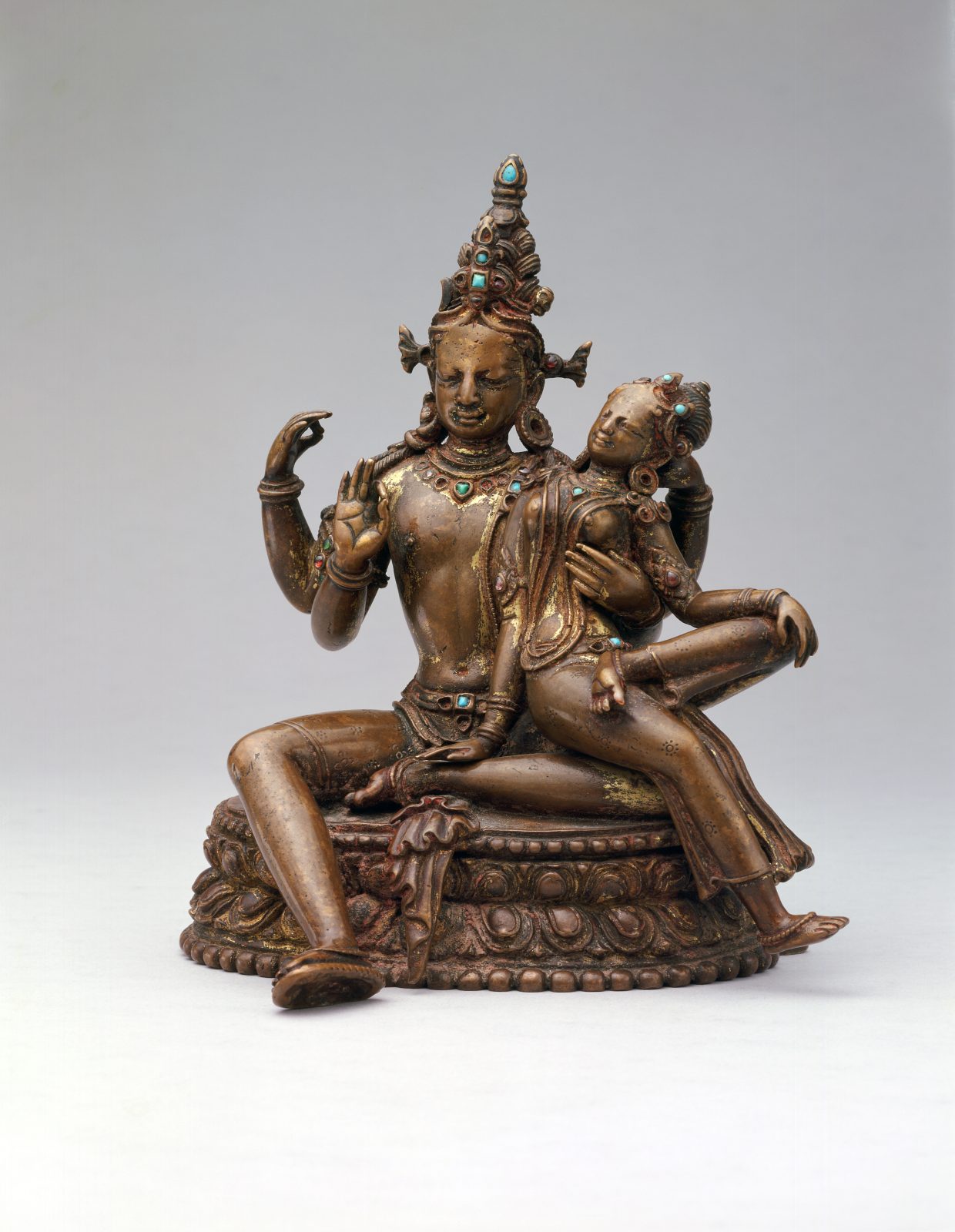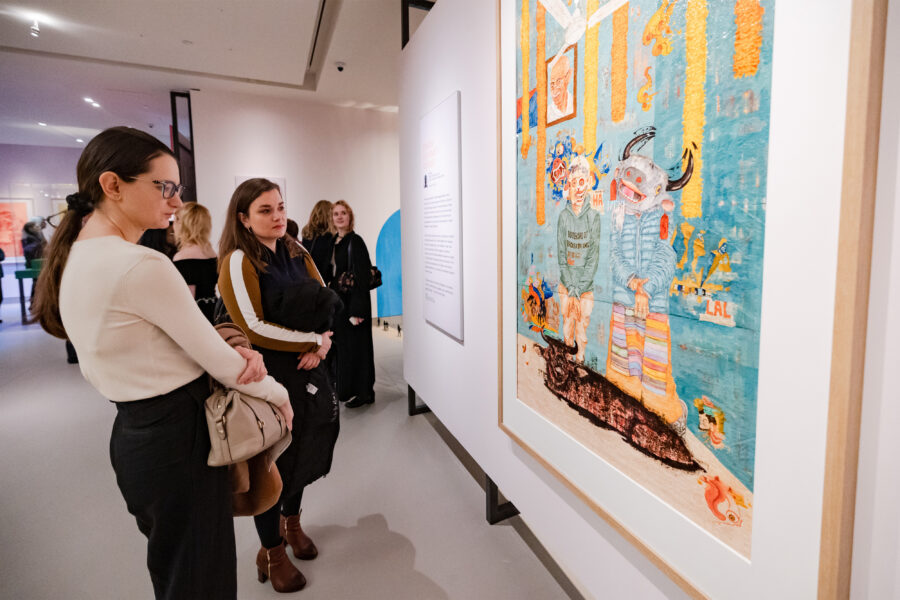b. 1977, Lalitpur, Nepal; lives and works in Lalitpur, Nepal

Photo by Pranab Joshi

Photo by Pranab Joshi
Nepal-based artist Prithvi Shrestha draws inspiration from nature and his surroundings. He aims to bridge the gap between the natural environment, technological progress, and human existence. His work looks into the interconnectedness of various elements in the universe, exploring the impact of technology on our sociocultural fabric. The artist often depicts deities in the traditional forms they take in Nepalese paubha paintings, but he sets them within contemporary, dreamlike landscapes, thus connecting them with the modern world.

Prithvi Shrestha; Attachment; 2018; acrylic on canvas; courtesy of the artist; Photo by Dave De Armas
Attachment is an exploration of the interconnectedness of things Prithvi Shrestha attached to, including his wife, nature, culture, religion, and technology. Nature and the artist’s loved ones feature prominently in his work, as well as his “self.” He associates the river with life and death, which is echoed in his wife’s flowing hair. Prithvi Shrestha depicts a form of Shiva and Parvati (seen in a sculpture near his work in the exhibition), the divine couple Uma and Maheshwora, to symbolize the power of male and female energy. This represents the love for his beloved and the importance of ritual practice in daily life. The artist merges nature and the divine in a dreamlike reverie surrounded by flowers and lotuses symbolizing purity and blessings. The golden geometrical lines represent the pervasive intrusion of technology in our lives.

Prithvi Shrestha; Believing Lines; 2023; acrylic on canvas; courtesy of the artist; Photo by Dave De Armas
Believing Lines explores the multiplicity of threads that constitute the wholeness of a life—the threads of trust, belief systems, and cultural fabrics that we are born into and experience throughout life. Influenced by his childhood in a ritualistic society, the artist examines symbolic power in the postures of gods and goddesses. Lotuses, birds, water, and more carry nuanced meanings, forming invisible yet potent connections.
The Rubin Museum’s sculpture of Shiva and Parvati, as well as the Durga on view in the Masterworks exhibition, are depicted in this painting, along with other images from the collection. The artist’s weaving in of elements like the paper birds and golden lines symbolizes the intersection of tradition and technology, as well as the belief systems that are the unseen lines that connect to create our human identities.
This object from the Rubin Museum’s collection is presented in the Reimagine exhibition in dialogue with Attachment and Believing Lines, inviting new ways of encountering traditional Himalayan art.

Shiva and Parvati; Nepal; 13th century; Metal; Rubin Museum of Himalayan Art; C2005.16.12

Wrightwood 659
Chicago, IL

Rubin Museum
150 W. 17th St., NYC

Get the latest news and stories from the Rubin, plus occasional information on how to support our work.